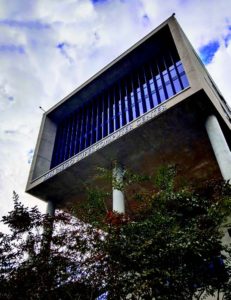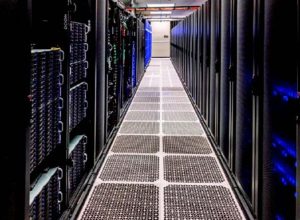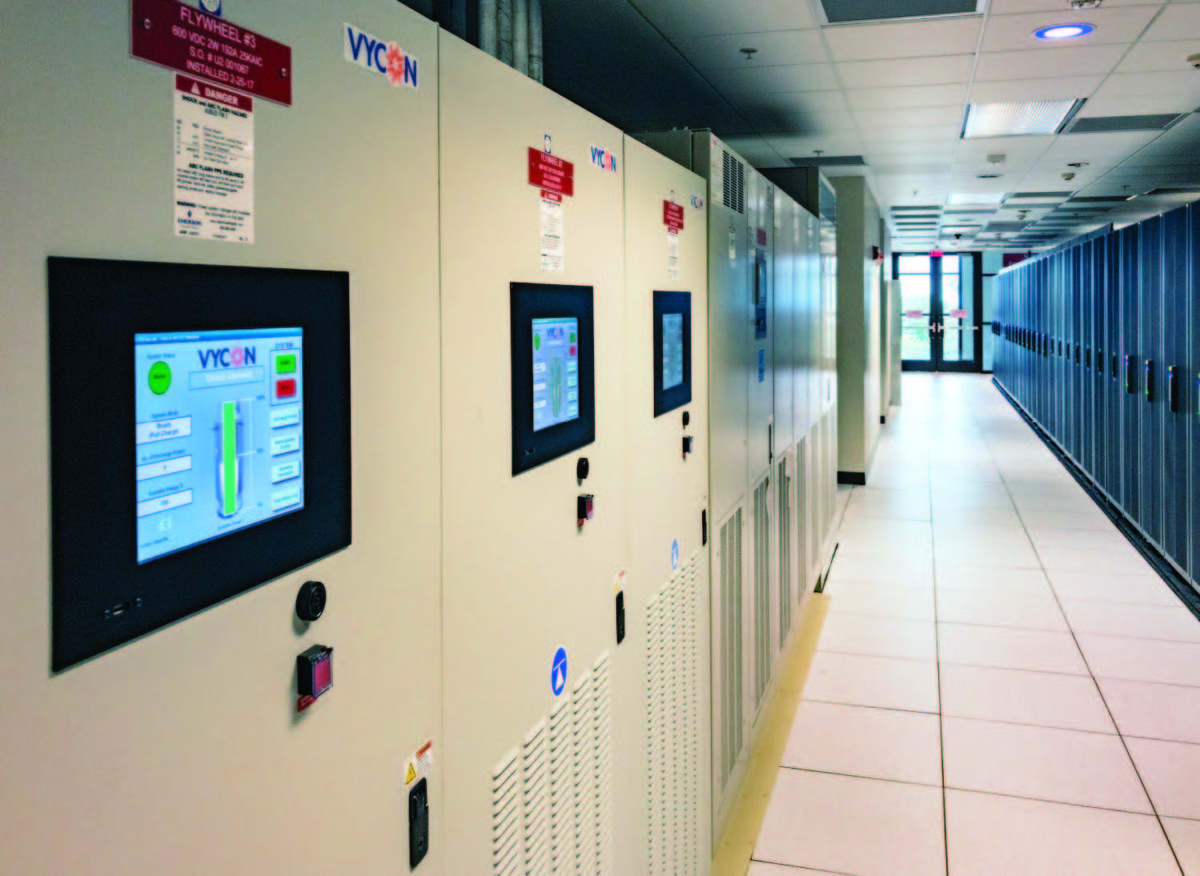 Since its inception in 1985, the San Diego Supercomputer Center (SDSC) at the University of California San Diego has been a beacon of light for scientific, engineering, and healthcare discovery. Through its computational science and data-intensive high-performance computing (HPC) systems and resources, SDSC has become a globally recognized leader in everything “Big Data” including the exploring, extrapolating, computing, analyzing, and visualizing myriad of extraordinary projects – from discovery of gravitational and light waves generated by a collision of two neutron stars, to learning how human DNA can repair itself to avoid disease. SDSC supports hundreds of multidisciplinary programs that span a wide variety of fields, from earth sciences and biology to astrophysics, bioinformatics, and health IT. With the help of its National Science Foundation-funded petascale Comet supercomputer, that can perform two quadrillion (2×1015) operations per second, SDSC is able to substantially advance scientific discovery across numerous domains.
Since its inception in 1985, the San Diego Supercomputer Center (SDSC) at the University of California San Diego has been a beacon of light for scientific, engineering, and healthcare discovery. Through its computational science and data-intensive high-performance computing (HPC) systems and resources, SDSC has become a globally recognized leader in everything “Big Data” including the exploring, extrapolating, computing, analyzing, and visualizing myriad of extraordinary projects – from discovery of gravitational and light waves generated by a collision of two neutron stars, to learning how human DNA can repair itself to avoid disease. SDSC supports hundreds of multidisciplinary programs that span a wide variety of fields, from earth sciences and biology to astrophysics, bioinformatics, and health IT. With the help of its National Science Foundation-funded petascale Comet supercomputer, that can perform two quadrillion (2×1015) operations per second, SDSC is able to substantially advance scientific discovery across numerous domains.
SDSC is an Organized Research Unit of UC San Diego which takes great pride in sustainability and the many awards won by the Center for its contributions to smart energy management for a cleaner planet. So when it was time for SDSC management to consider more efficient solutions for protecting its critical computer systems, traditional methods were not going to advance its efficiency goals.
SDSC has two data centers, one of which is a secure 5,000 square-foot facility that supports research activities for UC San Diego’s computational research. As one of the largest datacenters at the research university, this site handles general hosting for a wide range of research entities and collaboration activities with the UC Health System.
Managing numerous servers for secure data hosting, analysis, and high-compute research is the job of datacenter manager, Jeff Filliez. Ensuring 24×7 uptime of these data-intensive servers is crucial, as downtime is not acceptable for carrying out critical research and healthcare collaboration.
Redundant Power
As part of UC San Diego’s energy efficiency goals, a co-generation plant with natural gas turbines provides power to the campus as well as a redundant power source with dual electrical feeds from local utility, San Diego Gas & Electric. When it was time to upgrade the data center’s power protection equipment, Filliez wanted to find a system that would provide much longer service life and considerably less maintenance overhead. “Our UPSs were nearing the end of their life and the lead-acid batteries were 10 years old. I wanted to see if there was a better approach that would ensure the highest reliability, reduce maintenance and battery replacement costs, and give us an overall lower total cost of ownership,” explained Filliez.
Selection Criteria
With the critical need for SDSC’s data center equipment, reliability of the power backup system was paramount. Other considerations were proper sizing of the UPS to meet current and future expansion, reduction of battery maintenance and replacement costs, and a lower total cost of ownership (TCO).
To achieve these objectives, a flywheel system paired with a three-phase UPS was recommended to Filliez. While he was intrigued by that solution, he wanted to see the flywheels in action and learn the benefits from users. He went to nearby Scripps Green Hospital to understand more about impact, performance, and outage considerations. “It was nice to see the configuration of the flywheels together with the UPSs,” recalls Filliez. “The feedback from the hospital’s operations manager about the flywheels was very positive.” During his research, Filliez found VYCON and another vendor that offered a combined flywheel and UPS end-to-end system.
Of the three UPSs SDSC had, the Mitsubishi UPS had the best track record for maintenance. After seeing the flywheels and hearing the positive feedback on the flywheel’s operation and very low maintenance, Filliez replaced all of their lead-acid batteries with the highly efficient VDC flywheel units. A one-megawatt 9900C Mitsubishi UPS paired with three 300kW VYCON VDC flywheel units, in an N+1 configuration was chosen. “While our current power load is only about 300kW, I wanted to plan for the future,” said Filliez. “I found the other combo flywheel UPS system was too limiting for our needs. Having the VDC units independent allows us to stay with the Mitsubishi UPS and not have to purchase an entirely new end-to-end system. If down the road there is a more advanced UPS available, I want to be able to pair the flywheels with the new system. I like that kind of flexibility.”
A Proven Approach to Efficient Power Protection
 VYCON’s VDC flywheel systems are compact and store and deliver a reliable source of DC power utilizing the kinetic energy of its high-speed flywheel. The patented technology within the VDC system includes a high-speed motor generator, active magnetic bearings that are used to levitate and sustain the rotor during operation, and a superior control system that can provide information on the system performance. Only the VDC operates with a permanent magnetic motor with 100 percent active bearings that deliver higher efficiency, zero bearing maintenance, and a 20-year life span. Compatible with major brands of three-phase UPSs, the systems interface with the DC bus of the UPS, just like a bank of batteries, receiving charging current from the UPS and providing DC current to the UPS inverter during discharge. The patented technology enables the VYCON VDC flywheel to charge and discharge at high rates for countless cycles without degradation throughout its 20-year life – unlike traditional batteries.
VYCON’s VDC flywheel systems are compact and store and deliver a reliable source of DC power utilizing the kinetic energy of its high-speed flywheel. The patented technology within the VDC system includes a high-speed motor generator, active magnetic bearings that are used to levitate and sustain the rotor during operation, and a superior control system that can provide information on the system performance. Only the VDC operates with a permanent magnetic motor with 100 percent active bearings that deliver higher efficiency, zero bearing maintenance, and a 20-year life span. Compatible with major brands of three-phase UPSs, the systems interface with the DC bus of the UPS, just like a bank of batteries, receiving charging current from the UPS and providing DC current to the UPS inverter during discharge. The patented technology enables the VYCON VDC flywheel to charge and discharge at high rates for countless cycles without degradation throughout its 20-year life – unlike traditional batteries.
A battery plant is approximately three times the size of a comparable-sized flywheel, requires expensive cooling, and contains hazardous chemicals. Unlike batteries, VYCON’s flywheels do not produce any carbon dioxide or emissions – helping to further SDSC’s sustainability goals.
If there is a power outage, the VDC flywheel will seamlessly transfer the full electrical load to SDSC’s Caterpillar generator within 20 seconds. The generator has a dual starter with a10-second window. “If the load is critical, you can’t repair it on the fly. So even if you have 15 or 20 minutes of traditional battery backup, you won’t be able to get back online in that short of time,” noted Filliez. “Quickly transferring the load to the generator just makes sense.”
Another consideration for the equipment upgrade was space. Added Filliez: “Our old UPS system was in a different part of the building, with long cable runs and we didn’t have enough space for double the cabling. With the new UPS and flywheels, we were able to eliminate the batteries entirely – minimizing copper costs, and saving money for the future.
Also, we moved the power distribution board closer to the equipment, eliminating long cable runs, and reducing the risk of voltage drops.”
Effective Power
“As part of our overall goal of energy efficiency, we have been able to get our power usage effectiveness (PUE) down to 1.3 after improvements to our cooling system. Since there are no cooling requirements for the flywheels, unlike the banks of batteries we had, I’m sure our PUE number will get even better,” said Filliez.
It has been about six months since the installation of the UPS and flywheels. “Just a couple replacements of the battery banks and I’ve paid for the flywheel system – that’s what I call a very attractive TCO.”

